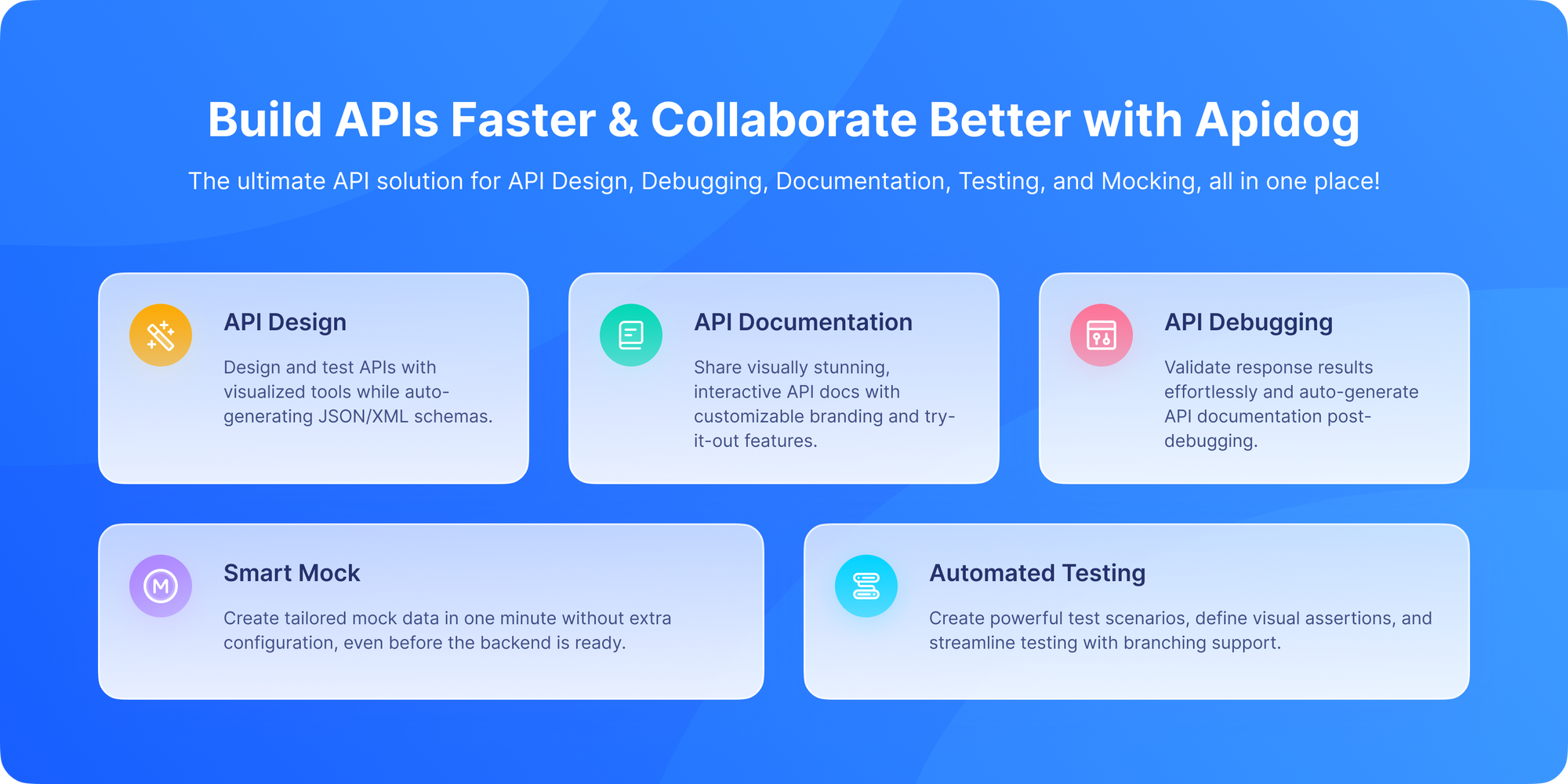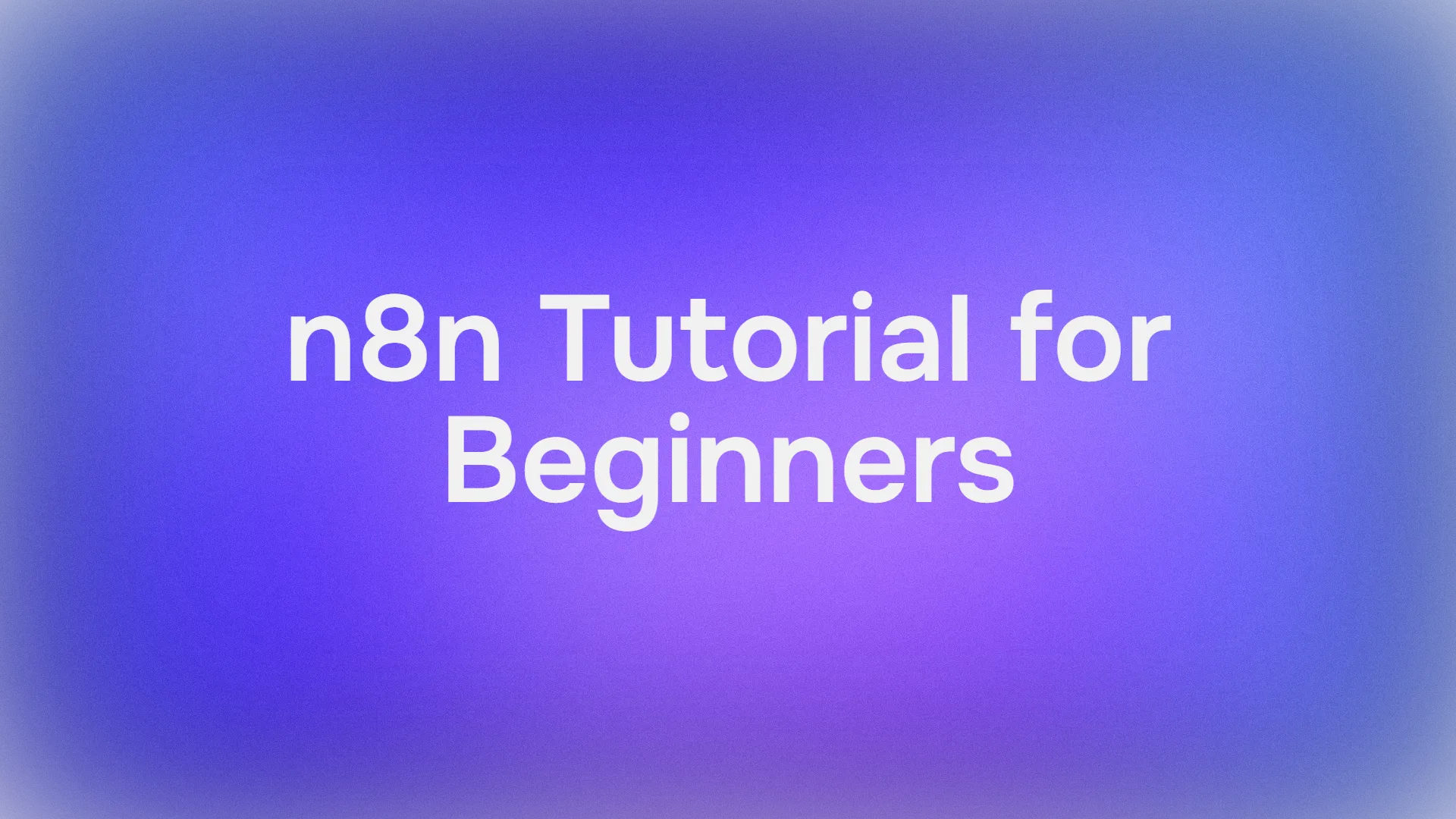You're waiting for an important email. How do you know when it arrives? Do you constantly click the "Refresh" button every few seconds, staring at your inbox until it finally appears? Of course not. That would be exhausting and incredibly inefficient.
Instead, you rely on a push notification. Your email provider tells you the moment a new message lands. This simple idea pushing information instead of constantly pulling for it, is one of the most powerful concepts in modern software. And its name, in the world of APIs and automation, is Webhooks.
Webhooks are the silent, behind-the-scenes workhorses that power our real-time digital experiences. If you've ever wondered how different apps talk to each other instantly, for example, how Slack messages pop up the moment someone posts them, or how GitHub triggers actions automatically when code is pushed, you've encountered the magic of webhooks APIs. If you've ever wondered, "How does App A know when something happens in App B?", the answer is almost always a webhook.
But here's the big question: what exactly is a webhooks API, how does it work, and why does it matter?
In this blog post, we're going to break it down in plain English. By the end, you'll not only understand what webhooks are, but also how they work, when to use them, how they differ from traditional APIs, and why they're important.
And here's a pro tip: if you're building or testing systems that depend on real-time data (which most apps do today), you'll need the right tools. Apidog, an all-in-one API platform, makes it easy to capture, inspect, and simulate webhook payloads—turning what could be a frustrating debugging process into a smooth workflow.
Now, let's unravel the mystery of webhooks and see how they make the internet feel truly instant.
The Problem: The Tyranny of Polling
To understand why webhooks are so brilliant, we must first understand the problem they solve: polling.
Imagine you've built an application that needs to know when a new order is placed on your e-commerce platform. How would you do it without webhooks?
The traditional, naive approach is polling. Your application would repeatedly ask the e-commerce API, "Are there any new orders? Are there any new orders? How about now? ...Now?" every few seconds or minutes.
This is like our email refresh scenario. It creates a host of problems:
- Inefficiency: The vast majority of these requests are wasted. The answer is "no" 99% of the time, but you've still used server resources to ask the question.
- Delay (Latency): There's always a gap between when the event happens and when your next poll occurs. This means your data is never truly real-time. If you poll every 5 minutes, your data could be 4 minutes and 59 seconds old.
- Scalability Issues: If you have thousands of clients polling an API every few seconds, you can easily overwhelm the server with requests, most of which return no new data.
Webhooks flip this model on its head.
Why Use Webhooks Instead of Polling?
You might wonder: why not just check the server every few minutes for changes? That's what polling does. But polling has issues:
- Wastes bandwidth with unnecessary requests
- Creates delays between events and responses
- Doesn’t scale well with lots of clients
Webhooks solve these problems by:
- Sending data instantly when events occur
- Reducing server load
- Making systems more responsive
In other words, webhooks are more efficient and scalable.
What Exactly is a Webhook?
A webhook is an HTTP callback. It's a way for one application to provide other applications with real-time information by sending an HTTP POST request to a predefined URL when a specific event occurs.
Think of it as a reverse API.
- With a standard API, you call them to ask for data.
- With a webhook, they call you to deliver data when it's ready.
It's the difference between calling a pizza place to see if your order is ready (polling) and the pizza place calling you to tell you it's ready for pickup (webhook).
The "Event-Driven" Paradigm
Webhooks are the backbone of event-driven architecture. Instead of applications constantly asking for state, they listen for events discrete things that happen, like payment.succeeded, user.created, or git.push.
When the event occurs, the source application packages up the relevant data and "fires" or "triggers" the webhook, sending it to the "webhook URL" you've provided.
How Webhooks Work: A Step-by-Step Breakdown
Let's use a classic example: receiving a notification when a payment is processed by Stripe.
- You Provide a URL: In the Stripe dashboard (or via their API), you register a URL from your application that you want Stripe to call. This is your webhook endpoint. For example:
https://api.myapp.com/stripe-webhooks. - You Subscribe to Events: You tell Stripe which events you care about. You might say, "Please send a webhook to my endpoint whenever a
payment_intent.succeededorpayment_intent.failedevent occurs." - The Event Occurs: A customer successfully buys a product on your website. Stripe processes their payment.
- Stripe Fires the Webhook: Stripe's servers immediately prepare an HTTP POST request. They package all the details of the payment event into a JSON payload and send it to your webhook endpoint URL.
- Your Server Receives and Processes the Request: Your application, running at
https://api.myapp.com/stripe-webhooks, receives the POST request. Your code parses the JSON body, confirms the payment is valid, and then performs the necessary actions: updating your database, granting the user access to the product, sending a confirmation email, etc. - You Respond: Your server should quickly respond with a
2xxstatus code (e.g.,200 OK) to acknowledge that the webhook was received successfully. If you respond with an error code (e.g.,500), the webhook provider will usually retry.
This entire process happens in milliseconds, enabling truly real-time updates.
The Nuts and Bolts: What's in a Webhook Request?
When you receive a webhook, the HTTP request will look very similar to any other API request you might make or receive. Let's break down its key parts using our Stripe example:
- HTTP Method: Almost always POST. (The event is creating a new notification in your system).
- URL: Your webhook endpoint (e.g.,
https://api.myapp.com/stripe-webhooks). - Headers: These contain metadata about the request. Crucial headers include:
User-Agent: Often identifies the source of the webhook (e.g.,Stripe/1.0).Content-Type: Usuallyapplication/json.- A Signature Header: This is critical for security (e.g.,
Stripe-Signature). We'll discuss this more later.
4. Body (The Payload): This is the juicy part. It's a JSON object containing all the details about the event.
A tool like Apidog makes webhook testing effortless. 🚀 Instantly simulate triggers, debug requests in seconds, and generate clear documentation—all without waiting for real events.
Why Are Webhooks So Powerful? Key Use Cases
The applications for webhooks are endless. They are the glue that connects the modern SaaS ecosystem.
- Payment Processors (Stripe, PayPal): The quintessential example. Instant notifications of success, failure, refunds, and disputes.
- CI/CD & DevOps (GitHub, GitLab): Notifying a deployment server to start a build when code is pushed to a repository.
git pushtriggers a webhook to Jenkins/GitHub Actions, which starts the build pipeline. - Communication (Slack, Discord): Sending messages to a channel when an event happens elsewhere. "New customer signed up!" or "Error rate just spiked!"
- Data Synchronization: Keeping data in sync between platforms. When a contact is updated in HubSpot (CRM), a webhook can tell your internal database to update its records.
- IoT & Monitoring: A sensor detecting an anomaly can fire a webhook to trigger an alert or a secondary action.
Common Use Cases for Webhooks APIs
Webhooks APIs power some of the most useful features in modern apps. Here are a few examples:
- Payments: Stripe or PayPal sends a notification when a transaction succeeds.
- E-commerce: Shopify is alerting your system when a new order is placed.
- Messaging apps: Slack or Discord, sending notifications when a new message or event happens.
- Version control: GitHub notifies your CI/CD pipeline when code is pushed.
- Logistics: Delivery companies updating order status in real time.
- Marketing: Mailchimp or HubSpot sending updates about email campaigns.
Without webhooks, many of these workflows would feel clunky or delayed.
Benefits of Webhooks APIs
So, why do developers love webhooks? Here are the key advantages:
- Real-time updates: Instant data transfer as events occur.
- Efficiency: No need for constant polling.
- Automation-friendly: Perfect for chaining workflows across services.
- Lightweight: Usually just a small JSON payload sent via HTTP.
- Scalable: Handles high-volume events gracefully.
The Challenges and "Gotchas" of Webhooks
For all their power, webhooks introduce a new set of challenges that you must design for.
1. Security: Trust But Verify
This is the biggest concern. How do you know that the POST request hitting your endpoint is really from Stripe and not a malicious actor pretending to be Stripe?
- Solution: Webhook Signatures. Providers sign each webhook payload with a secret key that only they have. They send this signature in a header (e.g.,
Stripe-Signature). You must verify this signature on your end using a shared secret to ensure the payload is authentic and hasn't been tampered with. Never process a webhook without verifying its signature first.
2. Reliability: What If Your Server is Down?
The webhook provider fires a request, but your application is down or throws an error. The event could be lost forever.
- Solution: Retry Logic. Most reputable webhook providers have a built-in retry mechanism. If your endpoint doesn't return a
2xxsuccess status, they will queue the webhook and try to send it again later, usually with exponential backoff. Your logic must be idempotent—able to handle the same webhook being delivered multiple times without causing duplicate actions (e.g., charging a customer twice).
3. Debugging: The Invisible Firehose
Debugging an asynchronous flow is harder than debugging a simple API call. The trigger happens on someone else's server, and the data arrives unannounced.
- Solution: Logging and Tools. Log every webhook received (including its payload and signature status) before you process it. Even better, use a tool like Apidog that can act as a webhook listener. Apidog can generate a unique URL for you, capture incoming webhooks, and let you inspect the headers and body in detail, making the invisible completely visible.
Webhooks vs. Other Real-Time Tech
It's easy to confuse webhooks with other technologies, but they serve different purposes:
- Webhooks vs. APIs: APIs are for asking. Webhooks are for telling. They are complementary, not competing, technologies.
- Webhooks vs. WebSockets: WebSockets maintain a persistent, two-way connection for true real-time, bidirectional communication (e.g., chat apps). Webhooks are stateless, one-way, and event-driven. Use WebSockets for live collaboration; use webhooks for event notifications.
- Webhooks vs. Server-Sent Events (SSE): SSE is a one-way stream from server to client over HTTP. It's great for live feeds in a browser. Webhooks are for server-to-server communication.
Testing and Debugging Webhooks with Apidog

One of the trickiest parts of working with webhooks APIs is testing them. With Apidog, testing Webhook APIs is no longer a hassle. Instead of waiting for real events to happen, you can simulate webhook triggers instantly and verify whether your service is receiving requests as expected.
Apidog lets you create webhook endpoints, set up request methods and payloads, and debug them in just a few clicks. Plus, it automatically generates clear documentation and even exports webhook definitions under the webhooks field in your OpenAPI file—keeping them neatly separated from standard API paths.
Whether you're handling payment notifications, third-party logins, or asynchronous task updates, Apidog makes building, testing, and documenting webhooks smooth and efficient.
How to Implement a Webhooks API
Here's a high-level guide:
- Set up an endpoint: Create a URL in your app that can receive POST requests.
- Subscribe to events: Register this URL with the service (e.g., Stripe dashboard, GitHub repo settings).
- Handle payloads: Write code to parse the incoming JSON/XML data.
- Respond correctly: Send back a 200 OK response to confirm receipt.
- Test thoroughly: Use Apidog or similar tools to test webhook calls.
Best Practices for Implementing Webhooks APIs
If you're building a system that sends webhooks:
- Use POST: It's the standard method for webhooks.
- Provide Documentation: Clearly document the events, payload structure, and retry policies.
- Sign Your Webhooks: This is non-negotiable. Give your users a way to verify the payloads.
- Implement Retries: Respect the reliability of your users' systems.
If you're building a system that receives webhooks:
- Verify Signatures: Always, always, always.
- Respond Quickly: Process the webhook asynchronously if needed, but respond to the POST request immediately to avoid timeouts.
- Make Logic Idempotent: Handle duplicate webhooks gracefully.
- Use a Tool like Apidog: During development, use Apidog to mock your endpoint, capture real payloads, and test your processing logic without deploying code.
Security Considerations for Webhooks
Security is a big deal when exposing webhook endpoints. Some common practices include:
- Secret tokens: To validate that requests actually come from the source system. Include a secret key in each webhook payload to verify authenticity.
- IP whitelisting: Accept requests only from known IP addresses.
- TLS/HTTPS: Encrypt webhook payloads in transit. Secure data transfers using HTTPS.
- Replay protection: Prevent attackers from reusing old webhook payloads.
When implemented correctly, webhooks can be just as secure as traditional APIs.
Conclusion: Embracing the Event-Driven World
So, what is a webhooks API? It's a way for apps to communicate in real-time by pushing data as soon as events occur. They're efficient, powerful, and essential for modern integrations. Webhooks represent a fundamental shift in how we build software from a world of constant, wasteful asking to a world of efficient, event-driven telling. They are a simple concept with profound implications, enabling the real-time, integrated experiences that users now expect. Whether you're building a payment system, an e-commerce store, or a messaging app, webhooks APIs are a must-know tool in your developer toolkit.
By understanding how they work, respecting their challenges (especially security), and using the right tools to manage them, you can harness their power to build more reactive, efficient, and powerful applications. The web is no longer a place of static pages; it's a living, breathing network of events. And webhooks are the nervous system that carries its signals.
And remember, if you want to make working with webhooks easier, Apidog is your best friend. With its ability to design, test, and manage APIs, including webhook flows, you’ll save hours of frustration.
So go ahead, download Apidog for free, and start mastering webhooks today.



